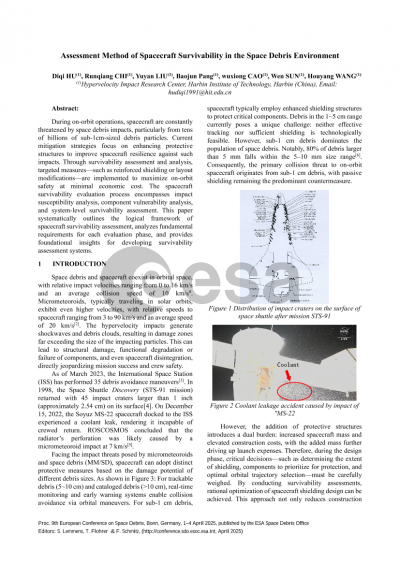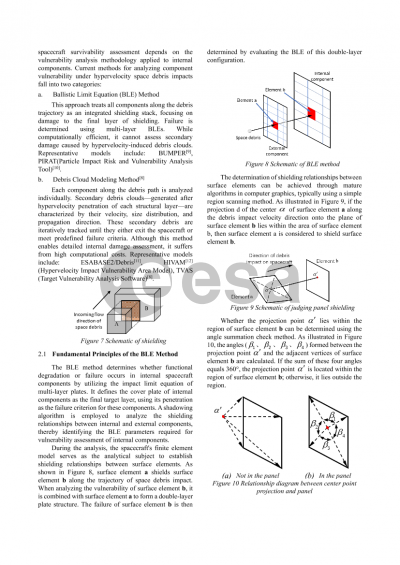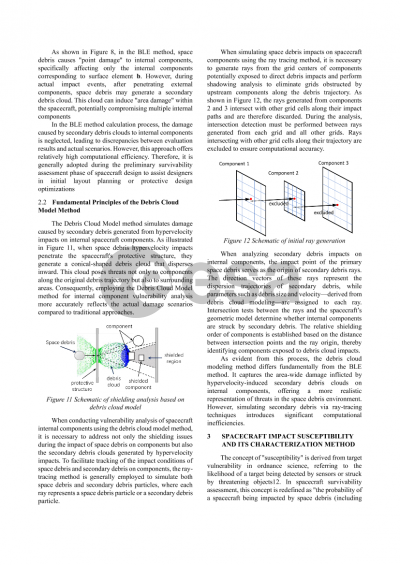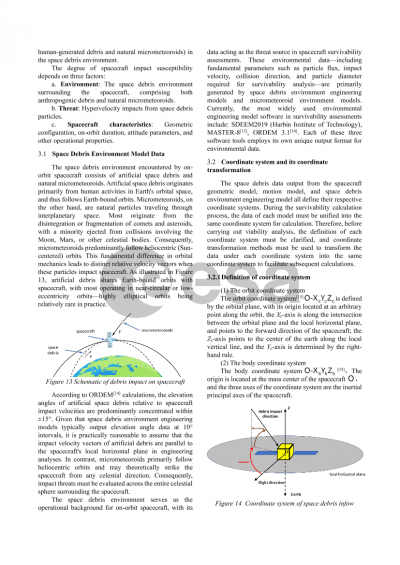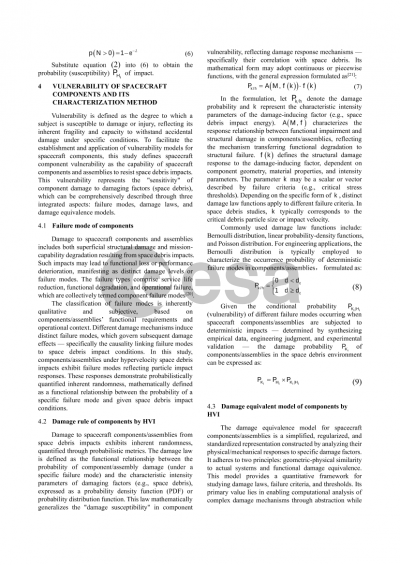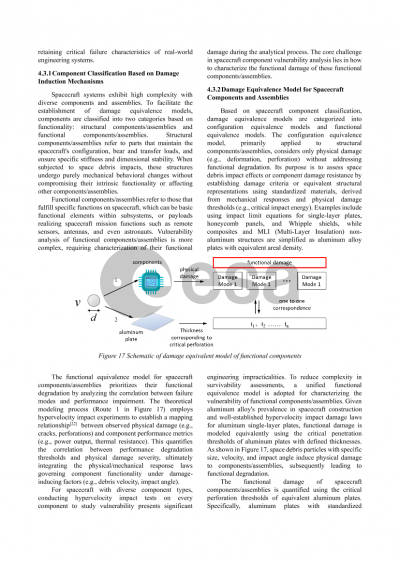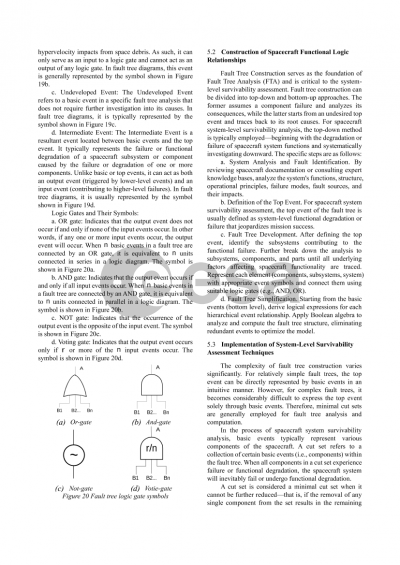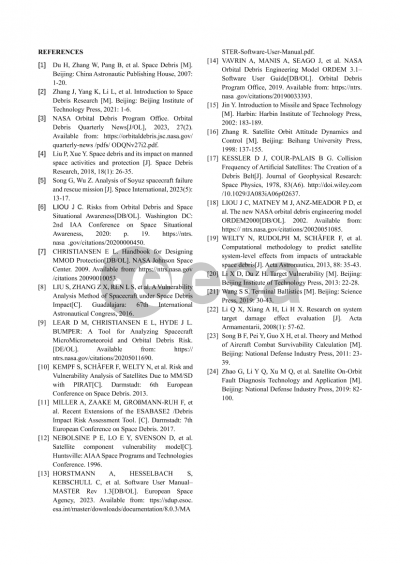Document details

Abstract
During in-orbit operations, spacecraft constantly face the threat of impacts from space debris, with varying sizes of debris posing different risks to the spacecraft. Consequently, different engineering strategies are applied based on debris size. For debris smaller than 1 cm, which exists in massive quantities estimated in the tens of billions, the primary protective measure currently involves enhancing the shielding structures of the spacecraft to improve its resilience against such impacts. A key engineering challenge lies in maximizing spacecraft safety with minimal economic costs.
Research on spacecraft survivability assessment in the space debris environment is essential to developing protection design or layout modifications, aiming to enhance in-orbit survivability without significantly increasing the mass or size of the spacecraft. This ensures mission success throughout the service life of spacecraft while effectively reducing manufacturing and launch costs.
Currently, two main approaches are employed in spacecraft survivability assessment: the Ballistic Limit Equation (BLE) method and the debris cloud model method. The BLE method offers high computational efficiency and is widely used in preliminary assessments during the spacecraft system design phase due to its maturity and engineering applicability. However, it has limitations; specifically, it cannot account for damage to internal components caused by secondary fragments from hypervelocity impacts. In contrast, the debris cloud model method can evaluate the potential damage of secondary fragment clouds on shielded components, making it suitable for detailed survivability assessments during spacecraft design and manufacturing phases.
This paper systematically presents the spacecraft survivability assessment method based on the debris cloud model. Based on the debris cloud model, space debris is simulated through ray tracing, and the characteristic parameters of space debris are mapped by ray data combination to realize the modeling of impact threat characterization. The assessment framework incorporates a dynamic Bayesian network to model the survivability of the spacecraft system, allowing for precise risk transmission analysis and the description of common-cause failures. This enables high-fidelity survivability calculations for spacecraft under debris impact conditions, offering technical support for the optimal layout and protective design of spacecraft internal components.
Preview
